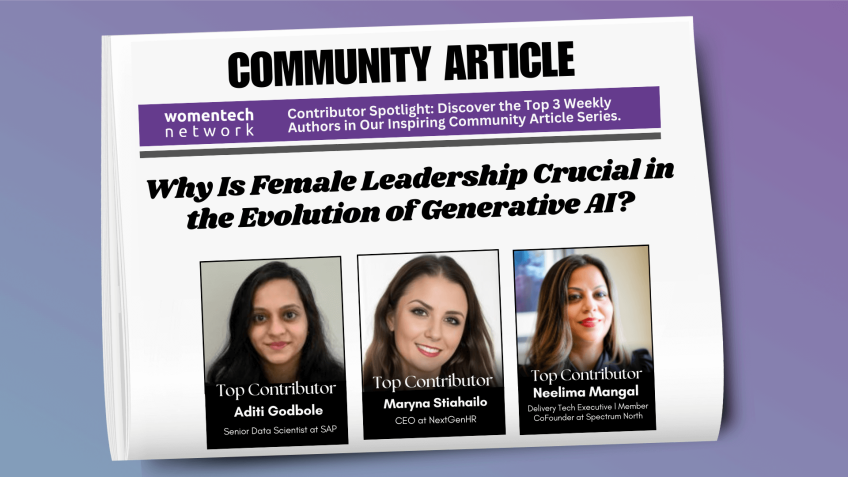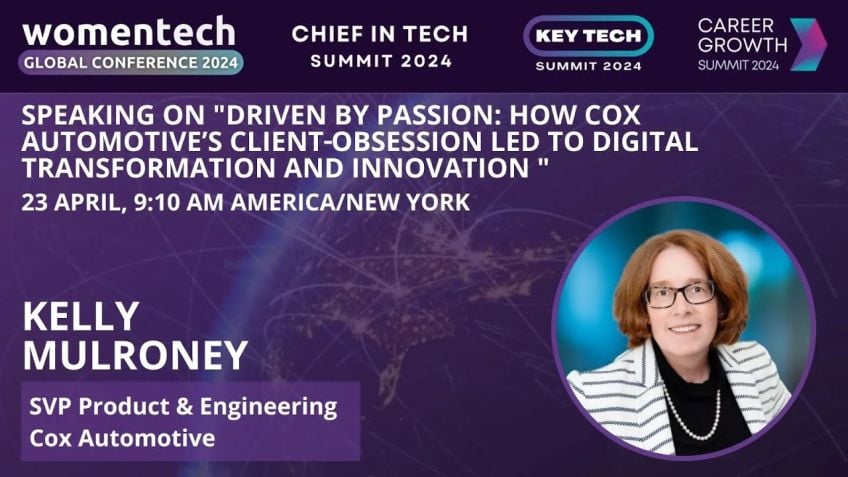Marjory Da Costa Abreu - Demystifying Artificial Intelligence
Demystifying the Use of Artificial Intelligence and Machine Learning
Hello everyone, thank you for joining this enlightening discussion about the current trend of Artificial Intelligence and Machine Learning. Today we are diving deep into the realities and misconceptions surrounding these buzzwords and challenging some of our preconceived ideas. I am Professor Mari, a Senior Lecturer in Applied Artificial Intelligence, from Sheffield Holland University in the United Kingdom.
Breaking Down The Hype Around AI
Artificial Intelligence has become a major focus in recent years with its applications touted across various sectors. However, we must remember that AI is not a panacea for all problems. At its core, its effectiveness lies in understanding data, understanding the concept of AI and its subset: Machine Learning and applying appropriate techniques wisely.
Understanding The Core Concept Of AI and Machine Learning
There seems to be some confusion between Artificial Intelligence, Machine Learning, and Deep Learning. To demystify, AI is the umbrella terminology under which Machine Learning operates, while Deep Learning is a subset of Machine Learning. So, AI isn't equatable to Machine Learning or Deep Learning. They each serve different purposes within the grand scheme of data processing and problem-solving.
Issues Surrounding Misuse Of AI Techniques
One major problem lies in the misuse of AI techniques and the so-called "black boxes". This stems from the ease of access to AI solutions where anyone can upload data and get results without understanding the behind-the-scenes workings. The lack of understanding and failure to fine-tune these techniques can lead to problems such as reinforcing existing biases in the data- a significant ethical concern in AI.
The Black Box Conundrum
The accessibility of AI "black boxes" raises significant issues. While it's beneficial that more people have access to AI techniques, it's also noteworthy that understanding their workings can greatly improve the resulting insights. The issue lies in the misuse of the black boxes rather than use of the black boxes themselves. The key is understanding the concept correctly before diving into its various applications, thus ensuring optimum results.
Understanding the Default Settings
By using predefined 'default' settings, people fail to optimize the results of their AI techniques. The usage of default settings can lead to issues like locking into a local optimum, reinforcing bias, and under-optimizing the potential of the AI technique. It is essential to understand that these settings are meant to be fine-tuned and changed according to the requirements of the data set and the specific problem under consideration.
Understand, Fine-tune And Use AI Tools Wisely
To effectively utilize AI, we must understand its limitations and potential pitfalls. It's recommended firstly to understand your data. Second, do not use AI techniques that you do not fully comprehend. AI is a powerful tool but it's not a one-size-fits-all solution. Creativity and understanding should be employed while using available AI techniques. Black-box AI can be a handy tool if used properly with an understanding of its workings. Remember, any AI technique is meant to work in your favour - not against you. Be aware, get your facts right and make informed decisions.
If you found this discussion enlightening and wish to explore more or discuss any of these issues, feel free to reach out to me on various social media platforms like Instagram, Facebook or Twitter, I am always willing to contribute towards ethical use of AI. Until then, happy AI exploring!
Stay tuned in for more such insightful discussions and enjoy the rest of the conference!
Video Transcription
Well, thank you very much for attending this talk. Um I have to say I'm, I'm so excited to be here and, and, oh, OK, you can't hear me. How about now? Testing, testing? Can you hear me? Fabulous. OK. Right.So I'm so excited to be, you know, attending and presenting in this amazing event. I have heard some really inspiring women so far and I hope to, you know, keep interacting with everybody. So let's start talking about my topic. So uh first of all, I would like to present myself. So my name is Mari, I'm originally from Brazil, but currently I am working as a senior lecturer in Applied Artificial Intelligence in Sheffield, Holland University, the United Kingdom. Uh And uh my work, I'm working as a um a lecturer in, in Sheffield Holland and part of my research. So I have been working uh in academic in settings for al around 20 years. And all my research has always focused on artificial intelligence, the theoretical part. So I have, you know, supervised research students and worked developing new models and my work focuses on creating new algorithms. So I evaluate the current ones I apply the current algorithms to you know, specific application areas and I evaluate how they behave and how they work.
It's interesting uh you know, in the last I would say 5 to 6 years, it has become very, very evident that we have a whole new um understanding of, you know, intelligence systems, artificial intelligence and its application. This is possibly due to uh having you know, more data available. So big data has a big impact on this and also having more processing power. So we have stronger, more powerful computers that can deal with that specific you know, amount of data. And therefore it can we can use intelligence systems to you know, process and understand the data. This has caused some good but also some bad in the world. It's very uh interesting that I I was listening to some of the other talks and and bias is something that a lot of you presenters are talking about. So when we talk about using data, big data, huge amounts of data, it's very common that the real data will have some sort of bias. And what I wanted to discuss with this talk today is actually the popularization of the use of artificial intelligence, which in my understanding, it can be a good thing but also the uh bad understanding and the misuse of these kind of techniques.
And I'm going to explore more uh of that in a bit. OK. So what we have as I said it's lots of data. So data is available and that brings uh a few different issues. So you have problems regarding access to data. So you have lots of systems. People don't really understand what is happening with their own data and then they, you know, give their data wingly. So it's not unusual to have people sharing lots of personal things on social network and on, you know, uh uh with their peers or their friends or whatever. And then this data is being used for these big tech companies, but not only that you have a lot of people uh like surfing in the trend of using A I and then using A I uh demands from the people who are developing new models, a very specific kind of training. So it's not, it's quite easy to go to a Python platform or to, you know, a, a Microsoft one or a Google one press some buttons and then getting some results for a neural network, a decision tree, a random forest, a a AAA convolution on neural network. And that sounds really amazing. And then that can, you know, make people have more access to this kind of techniques, but understanding how they work would have a much bigger impact on the actual results. So uh the first thing that I want to talk is this misunderstanding of the concept. So artificial intelligence is everything that is intelligent. And then you have something called machine learning machine learning is a set of techniques which are inside artificial intelligence.
It's not everything, it's not the same thing. Artificial intelligence is different from machine learning. Machine learning is a subset of techniques within artificial intelligence. And then you have deep learning, which is something also that, that became popular and became possible because of the deep learning of of the big data evolution. So we have deep learning which is something inside machine learning. And then you have machine learning, which is something inside artificial intelligence. So it's not uncommon to see people saying, oh, machine learning is different from artificial intelligence. Are you using doesn't exist? So understanding what you have, I think it's a very important step.
So the first step is understanding that you have lots of data, the data has bias and you should be aware of the bias. Second step is understanding that machine learning is not the solution for all our problems. And then you have different levels of techniques that you that you can use within machine learning and then within artificial intelligence. So not everything that is intelligence is machine learning and then deep learning is not something different from machine learning. OK. So this is the second point.
Then you have lots of models, you have something uh some of the techniques they could be potentially well explored using this big data uh reality. And then uh you have lots of other techniques that can be used. Not necessarily exploring the big data reality. But that could cause very much similar results without the need for creating those big uh you know, very powerful solutions that don't really deal with lots of uh uh variations in the data and so on and so forth. So they second thing as I said, it's important to understand the whole contest and then what you have available, but not only that. And this is the main point of my talk today that I would like to talk to you. So my main concern with the widespread use of machine learning specifically, which is what is mostly available on the, you know, solutions of the shelves that you can find online is the misuse of the black box. And why do, why do I say the black boxes are misused? Because the fact that you make this so accessible, anyone can go to Python to a platform to Google to Microsoft or whatever and then press some upload some data, press some buttons and get some results. But understanding what those results are is so important and it's so important to understand how to fine tune or parameter, tune the techniques. So more often than not, and I'm going to ask you this and I would like you to reply on the chat box.
Have you ever used any uh black box, any machine, you know any technique which is off the shelf that you didn't implement? Can you say yes in the chat box or no, if you haven't. So can no, Savita didn't use who everybody else. Who, who used it? Can you tell me yes or no, quickly? No. Oh, very good. I have a very good audience. So what happens is when you have a technique, for instance, you have a technique called neural network, which something that is very popular. A neural network has several different parts on it that you could potentially. What happens is in the black boxes in the off the shelf solutions is that they come with what we call default settings. So they have predefined numbers for these parameters for these, you know, uh uh configurations of the technique. And what most people do, most people who don't have the understanding the training to, you know, organize this, they just use the default settings and then they get the results and then off they go, you know, presenting that selling that solution. And this is a very big problem because you know the default settings, they are not there to be used, they are there to be changed.
And then when, when you get a set of data and you use the default settings, you are by no means optimizing the results of that technique. When you are not optimizing it, you can reinforce bias, you can uh be locked in a what we call a local, you know, optimum. So you don't have the full potential of that technique, but worst of all uh when you don't change and you don't refine the parameters, you can create uh solutions that look fine. So they look, they have what we call, you know, high uh acceptance rate, they have lower errors, high accuracy and so on and so forth. But they don't really classify anything because you haven't fine tuned the technique. So this is a major problem and I can give you some examples of what can cause what, what, what are the impacts. So this is completely directly linked to the actual data set. So I imagine that you have a data set of faces. So you want to recognize face faces. So you want to say if this person is a female and then this person is a male. So for instance, you want to identify gender from faces and then you want to use CCTV camera videos, OK?
To do that if you select a group of pictures or frames from a video and then you do it in a very small. So you have a very small selection of videos of pictures from these videos, you might have a very good result. You might have, you know, very high accuracy. So the the the amount of images they are correctly classified, classified is high. But if you don't know how to fine tune and you don't know how to analyze the results, the actual, in actual fact, you might be excluding the arrows, even though you have a high accuracy rate, you have a high acceptance rate, the errors that are caused, they exist, they might be linked to specific groups.
So if you want to identify genders, uh so male and female, for instance, you might get lots of uh accepted, you know, classified images, but the, the wrongly classified ones, an Asian background or they might be black people and then you are creating, you are reinforcing the bias.
Another example, one of my research students, he's doing, he's doing mining on judicial sentences. So if you are, if you want to classify, you know, judicial judicial sentences, so law uh uh stuff you normally use uh uh uh uh processing language. So you natural language processing techniques, which is one kind of, you know, machine learning model. Then what happens is if you don't fine tune, if you don't optimize the techniques, the the models, what happens is is that you reinforce the words that are mostly linked, they are mostly mostly present on the specific sets of sentences that you, you are analyzing. So you don't really understand what is going on with the technique. You don't really understand what is the relationship between the technique and the data set and the results. So if you just go to the black box, uh upload the data set, press a button and then get the results. That's not enough. We should be, you know, focusing on getting people to understand how to fine tune machine learning models so we could have better quality, you know, solutions and then everybody would benefit it. So society would have better solutions. People would be able to improve the quality of their solutions.
And then the update process of everything that we are using can be easier as well. Uh The default settings, they are uh quite, you know, interesting. I have been to different talks where people would say to me but you know, the default settings they are there because they are the best optimized settings that you can get for the techniques. And that's really not the case. You know, uh some people, they had this illusion that the default settings they were selected. But there is no such a thing as a good single configuration of a technique that will solve everybody's problem. So each technique is dedicated, it should be fine tuned to the data set to the problem that is trying to solve. This brings me to the next problem. And the next thing that I wanted to demystify today with this of this talk, which is the sensation and the feeling that people from all areas apart from, you know, computer science, computer engineering, looking at machine learning as the, you know, panacea, the holy grail, the only possible solution that can, you know, make our lives better, which is again, absolutely not the case.
So you have two issues with people from other areas. One of the issues is people thinking that they, the technology, which is really bad because they think that solution, which is, you know, very magical and very hidden and very complicated, which is not true. But they think that uh it's going to replace them in the workplace. This is never the case. Another thing that I want to dis mystify is the fact that, you know, the current uh power, power that we have, you know, the technological power and then they, the dedicated solutions that really work because they, they went through the process of fine tuning, they solve specific problems, they are not there to solve, you know, to become a human, they are not going to become, you know, to replace human beings.
That's not the goal. The goal is to have, you know, specific task tasks done really, really well. The other thing that happens is because people don't really understand, you actually have the opposite uh reaction. So people in higher, you know, roles in institutions, being it public or, or uh private institutions, they see potentially, you know, increase in gain in, in, in profit because they have, you know, a more um uh accurate, a more precise uh so running of the their businesses. So another example that I can give you is, you know, in the Brazilian judicial system, they want to replace, they want to use a decision support system that does uh classification of, you know, sentences. So it gives you a suggestion of the outcome of the sentence to a judge for instance. And this was done not following fine tuning, but the, the judges, they want to make their lives easier, even though this might have really big impact on the lives of the citizens. They are, you know, uh, opening those cases so they don't really care about. Oh, what is the impact of this bad, badly designed A I to the, you know, the population, they don't really care about that. They want, you know, facility, they want to have everything made quicker. And this is a really big problem. So this is something that we must fight as well as a group, as a team, as AAA community that you know, works and studies um artificial intelligence, machine learning models and so on and so forth.
So just to wrap up my talk today, I hope you are following the idea that I wanted to bring today was this mystifying the use of A I? So A I is not going to solve everything A I can be a very powerful. So, so solution can be a very supporting tool, but it's not going to save everything and to deal with every single problem that we have. The first point that I wanted to raise is understand your data. So if you want to use machine learning, make sure they first of all, before you even get to the model they want to use, you must understand the data, they want to use. So if you understand the data, if you are not dis area come and find someone, go and talk to that person today specialist. So you will understand the data. The second one is do not use techniques that you don't understand. If you obviously you don't need to want to be a, you know, a mathematician, a specialist on the workings around of a support vector machines or deep learning uh neural network for instance. But you should understand the overall workings of that technique that will give you understanding and power and knowledge to be able to do the next thing, change the default setting.
So you will be able to do the fine tuning the parameter tuning that we all that II I like to talk to, you know, my students, my people that I talk to and and everybody else. So uh oh Pa Paula, if you want to have to talk to me about that, I have a few, you know, research on gender bias in data, I'm more than happy to collaborate with you to have to, you know, exchange some ideas. The next thing is be creative. Don't use what everybody else is using, make sure that you know what is available and then you know, go and try but always changing the default settings. The next thing is be aware of black boxes, you know, off the shelf solutions. They are very good, very useful. They can be used no problem whatsoever with that. But they must, they must be used with careful analysis and understanding. And then if you want, you can talk to me. I'm more than happy to, you know, discuss these specifics. I am on Instagram. I'm going to post my um profile on Instagram. You can find me there, you can find me on linkedin, you can find me on, you know, Facebook, you can find me on Twitter as well. I'm always, you know, at Prof Maji, I'm doing research on theoretical uh A I, not only machine learning but other techniques as well.
I'm more than happy to discuss, you know, I'm very willing to, you know, get involved with the social part of the ethical part of using A I because I'm very worried about uh you know, this kind of uh misuse. Um you know, just want to, if you want to talk to me, get in touch, I'm more than happy to talk to you and, and that's it. This is what I wanted to talk today and thank you again for coming and please please enjoy the rest of the conference. It's amazing. We, we can meet lots of amazing women and thank you very much for attending. Bye bye.





